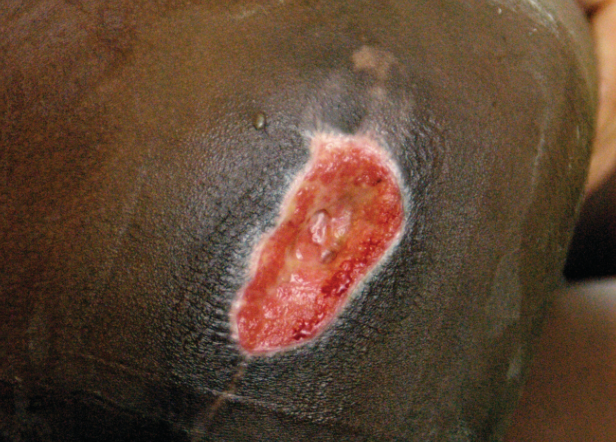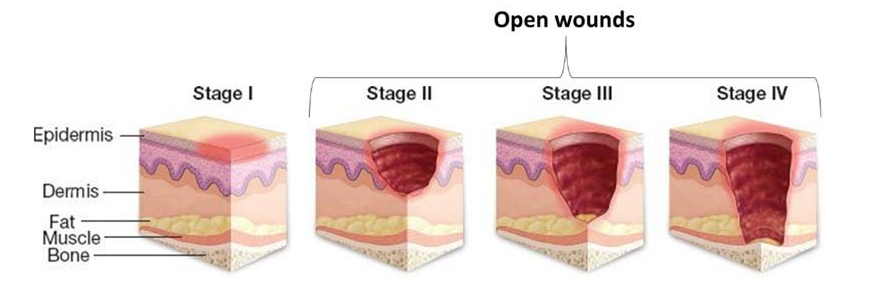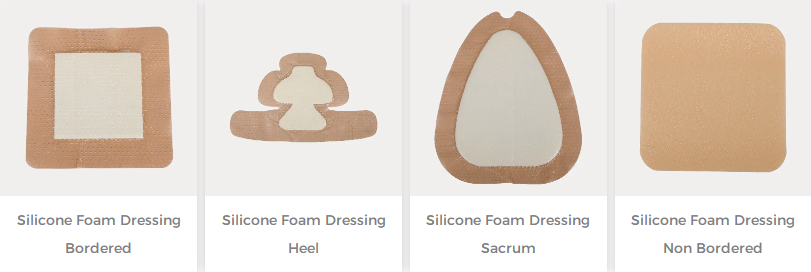Due to the differences in the skin color of people, darker skin or callused, dry, gray skin is easily covered and difficult to observe under dim light, and patients with dark skin are more prone to keloids and inward hair Problems with growth and hyperpigmentation, dark skin that does not turn white when pressure is put on bony prominences. In order to improve our skills to capture these "hidden" tissue injuries, we also need to learn some techniques. This article will introduce how to identify pressure injuries in dark skin. Let's take a look together.
What is a Pressure Injury?
Pressure injury refers to the long-term pressure between the body's own gravity and ground contact, which affects the skin and subcutaneous tissue at the local stress point, ischemia, hypoxia, and malnutrition. Necrosis of the skin and subcutaneous tissue, and skin ulcers, usually occur on bony protrusions, such as the head, shoulders, or heels. They are the result of pressure or pressure combined with shear or friction.
Pressure sores are classified into stages and include four main stages. Here is a simplified definition to illustrate how pressure sores change over time:
Stage I is described as intact skin with erythematous areas that do not turn white under the pressure of the skin. The wound may feel warm and sensitive.
Stage II corresponds to an opening in the skin. The wound may also form a usually painful ulcer. It may look like a bruise or an open and burst blister.
Stage III is characterized by complete tissue loss. The wound extends into the subcutaneous tissue and forms a small pit.
Stage IV is characterized by complete tissue loss, with severe destruction and necrosis affecting muscles, bones, and supporting structures such as tendons and joint capsules, and in some cases sinuses.
The dangers of pressure injuries:
It can cause skin damage, cause pain, reduce the quality of life, and in severe cases, secondary infection can cause sepsis and life-threatening. Pressure ulcers are costly to organizations and individuals, not only affecting the recovery of the disease, prolonging the length of hospital stay, Increase the difficulty of care and family financial burden. However, people with darker skin are more likely to develop more severe pressure sores. The reason for this discrepancy is unclear, but upon further exploration, there are indications that due to the difficulty in recognizing early signs of pressure sores,
How to recognize pressure injury in dark skin?
Examining the skin in a well-lit room, applying moisture to dry skin, and palpating for tenderness can help reveal these lesions. Turning the patient on their side exposes the heel to light and facilitates palpation. On palpation, does the skin feel cooler or warmer than other areas? Is it soft or hard? Dark skin may not turn white or red, but as the pressure injury progresses, it can turn purple, blue, or eggplant Don't forget to document any verbal reports from the patient, their family, or the medical records of previous institutions.
Some factors to consider when evaluating dark skin include:
1. The skin tone on intact dark skin remains unchanged and does not turn white.
2. Partial skin color changes will occur in the compressed part, but it is different from the usual skin color.
3. Tissue changes due to injury/inactivation make the skin cool to the touch; this may be preceded by localized heating from an inflammatory response.
4. The color of the previous full-thickness pressure injury/ulcer site will remain lighter until the scar has completely subsided.
5. Erythema may appear purple/blue or violet (eggplant) in dark skin.
6. Glossy/tight skin may develop induration/non-pitting edema >15 mm in diameter.
7. People may or may not report pain or itching at the site of tissue deactivation.
Choice of pressure injury dressing:
Silicone Foam Dressing can be used. This foam dressing is very soft, can be cut, and has enough thickness to effectively disperse the pressure on the compressed area. The five-layer structure and the elasticity of silicone can effectively reduce the shear force, and the smooth polyurethane backing can effectively reduce the pressure. Frictional, breathable, waterproof, and antibacterial, can ensure a suitable microenvironment at the application site, absorb the patient's sweat during the operation, avoid skin moisture, maintain skin moisture, limit skin loss, and increase local tissue resistance.
In conclusion, skin assessment requires vigilance and close attention using all of our senses. This is crucial for people with darker skin tones, as subtle changes tend to go unnoticed. In addition, risk assessment tools designed for people with darker skin are needed, as well as more research in dermatology and wound management on patients with skin of color.
For more information on Innomed®silicone foam dressings, refer to the previous articles. If you have customized needs, you are welcome to contact us; we will serve you wholeheartedly.
At Longterm Medical, we transform this data by innovating and developing products that make life easier for those who need loving care.
Editor: kiki Jia
Date: January 18, 2023

 English
English عربى
عربى Español
Español русский
русский 中文简体
中文简体








